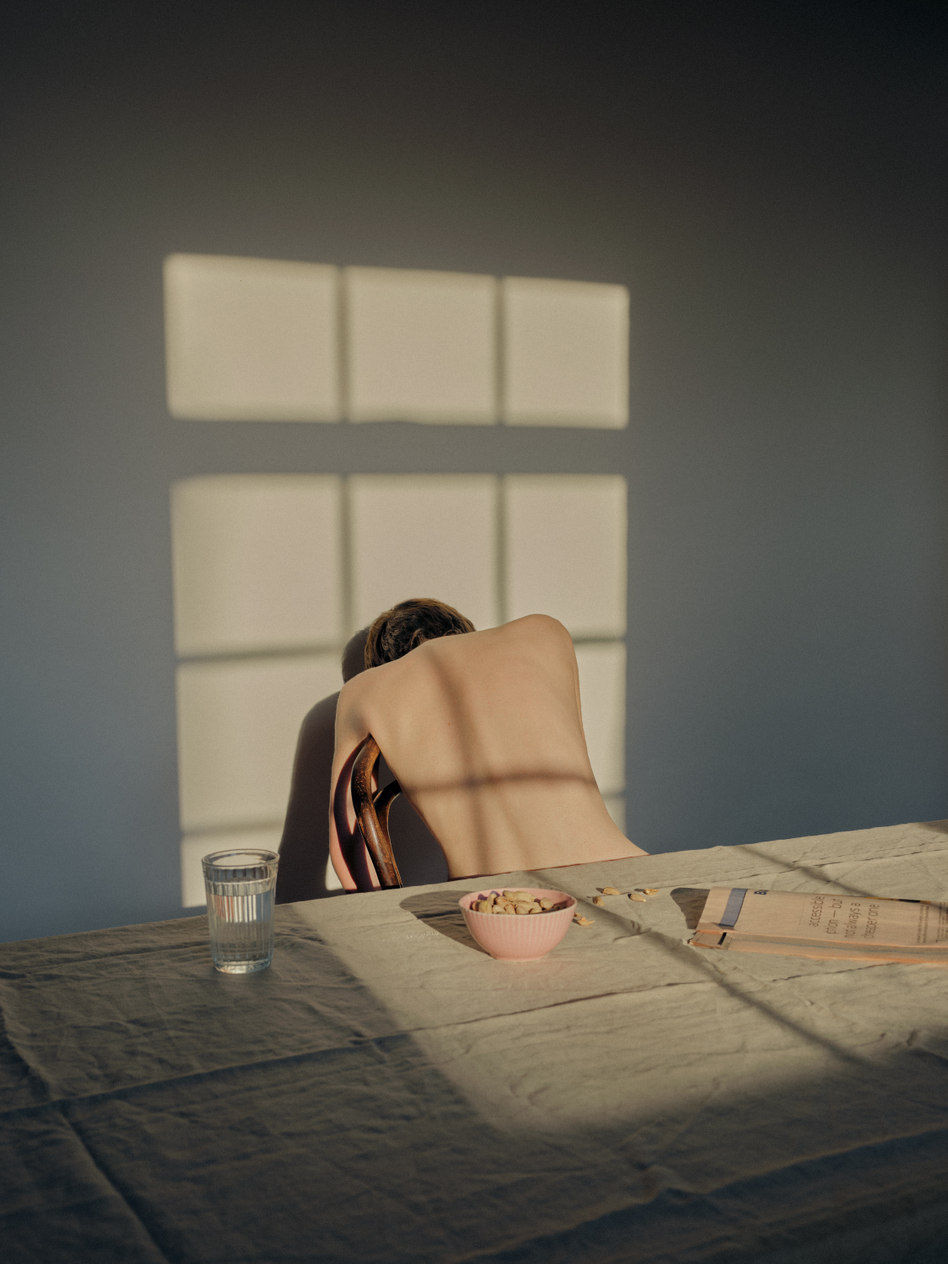Kristina Varaksina Lockdown project 2020
- Dave Macey

- May 22, 2020
- 3 min read

Recently I have come across the work of Kristina Varaksina, a London based photographer. Her most recent project has been in reaction to the covid 19 crisis and the effects of lockdown, for which she created this photograph.
There are several elements that struck me when studying the image. The first being the subtle use of colour, of how the hues are all from the warm part of the spectrum, that they are harmonious and not complimentary. This creates a subtly soft image that avoids using contrast to create an impact and can be difficult to achieve.
Then there is the composition. Too often with images about the lockdown we are presented with images about social distancing, emphasising the space between people and contrasting this with normal times. Or people staring out of windows, longing to be back in the world and being part of the world again, emphasising how our needs as social animals is not being fulfilled. All of these are rather predictable, lacking any true originality or creativity and having the depth of the obvious and clichéd.
However, this image I feel avoids this. The way the figure is slumped over a chair, facing away from a window offers a greater insight and understanding of the human psyche. One of the symptoms of prolonged isolation is a fear of the outside world, the need to venture out diminishes because we have got used to the routine of being indoors. This can then lead to further emotions such as apathy and becoming lack lustre, which in turn feeds the fear of going outside, all classic symptoms of “cabin fever”. The end result is an image that offers a greater understanding of lockdown, an image that encapsulates the symptoms of “cabin fever” combined with the gentleness of harmonious colours.
The last point I wish to mention is the style of the image. The image has a sense of ambiguity to it meaning that the connotation has a certain amount of fluidity and can lead to various definitions. The meaning is not blatantly obvious, it’s not forcefully imposed onto the image as so many of the image of lockdown have been, but gives the viewer more respect and allows them to come to their own conclusions. My own reading of the image is exactly that, my own, but the image is constructed to allow another person to come to a very different interpretation.
This is due to using the deadpan style, where connotation is intentionally kept to a minimum and the image is presented more as a depiction of reality rather than someone’s interpretation of that reality. For instance, the proportions all look realistic, the perspective hasn’t been stretched or manipulated to emphasise space or certain objects, but the scene has been presented as it is meant to be in reality. There is nothing in the image shouting at the viewer “look at me!” but instead the photograph is presented as a unified whole, something to be subtly appreciated with a sense of harmony and completeness.
The deadpan image is also a very academic style of photography. I know when I did my own BA in photography, there was a definite emphasis on the deadpan style, especially within the landscape photograph and portraiture. It enables the image to communicate itself, to show events, people and scenes with a second person narrative and gives the impression that the photographer has minimised their influence and interpretation of reality. Of course it doesn’t truly manage this because the photographer still had to construct and take the image, but it gives the illusion of lacking interpretation and enables the photograph to be a facsimile of reality.
Also, the deadpan image has been embraced by the fine art community and demonstrates the links between academia and fine art. Ever since LeBrun opened the French Royal Academy in the 17th century there has always been a strong link between fine art and academia. Initially, when photography was first invented it was seen as a craft because of its mechanical nature and was seen to lack the creativity of the fine arts because it was just copying the world. But over the decades the photograph has been more accepted as fine art, that creativity and imagination can be used as freely as they can with any other art and when it became an academic subject, then it was ready to become a fine art.
It is this style that makes the photograph fine art and avoids the picturesque clichés. There is a wide yawning chasm between fine art and the picturesque, where images are manipulated in photoshop and are divorced from reality. The picturesque creates fleeting images, whereas the deadpan fine art imagery gives a photograph that will linger and stay with the viewer, ready to offer something new every time the image is viewed.



Comments